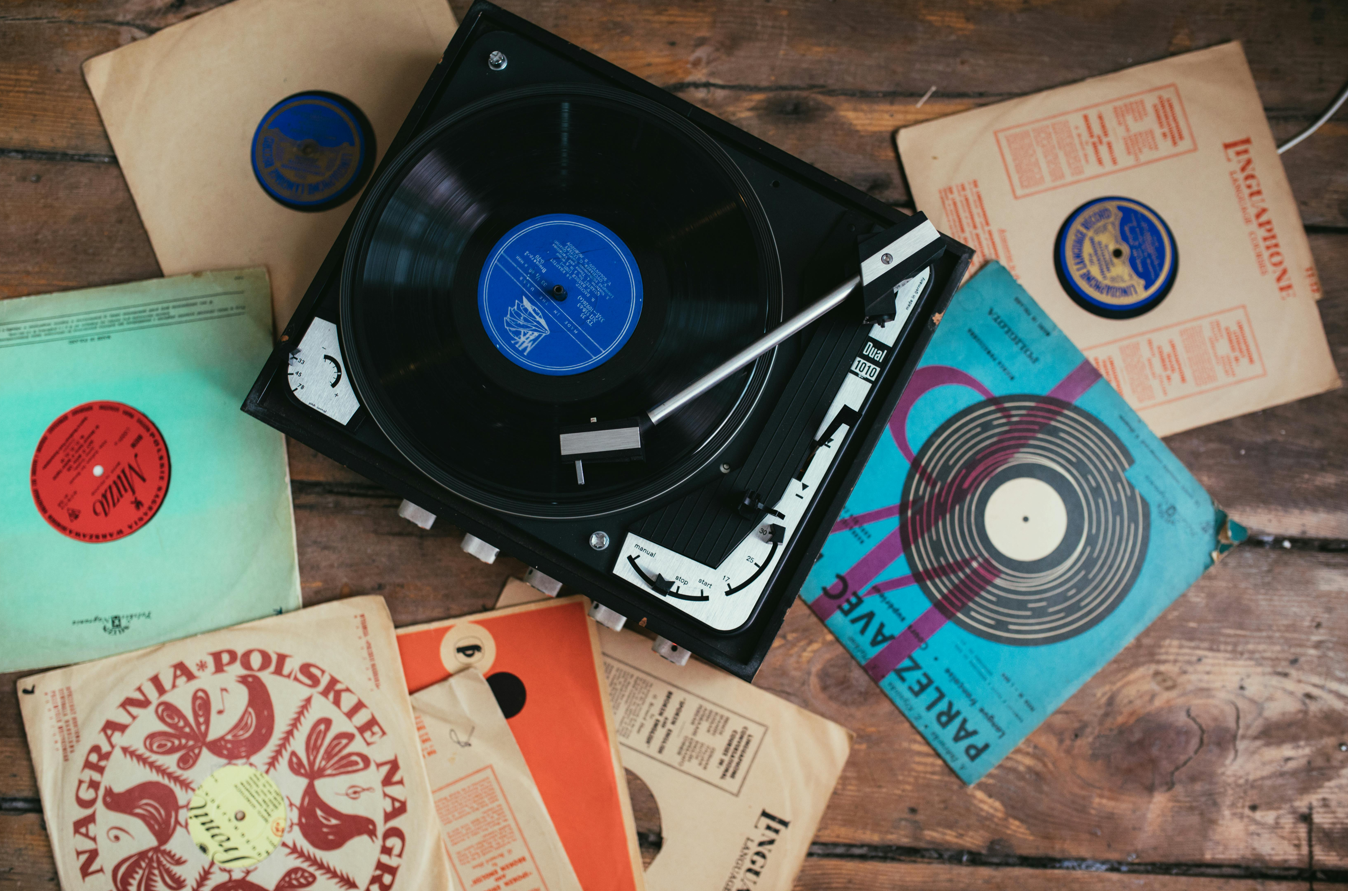The final scene of The Boys Season 3. Homelander introduces his son to the world. A protestor throws a can. A head explodes. The crowd, after a shocked silence, erupts in cheers. And underneath it all, a tense, menacing score by Christopher Lennertz sells the horror.
Now, imagine isolating that score. Imagine not just hearing it, but feeling it as a physical object. The needle drops on a blood-red vinyl record. The sound isn't coming from a compressed stream; it's being generated by a diamond tracing a physical scar in plastic.
This is not a niche affectation. In 2025, the demand for vinyl soundtracks for shows like The Boys or Marvel's WandaVision is a powerful undercurrent in the vinyl resurgence. But to dismiss it as simple nostalgia is a critical error. This is a new kind of collecting, driven by a desire to own not just the music, but a tangible piece of a fictional universe.
The First Principle: From Comic Book to Vinyl Record
To understand this phenomenon, you must first understand the psychology of the comic book fan. Fandom in this space has always been rooted in collecting physical artifacts. The rare first appearance in a comic book, the meticulously detailed action figure, the art book—these are not just merchandise; they are totems that extend the world of the story into our own physical reality.
The vinyl soundtrack is the next logical evolution of this instinct. It is the sonic artifact.
It's a piece of world-building you can hold and operate. The unique album art, the colored vinyl variants, the liner notes from the composer—these elements transform the score from background music into a primary text, an object of study. It satisfies the same collector's impulse that drives someone to hunt down a rare comic, but for the auditory dimension of the universe.
A Tale of Two Scores: How Vinyl Elevates Different Narratives
The magic of vinyl is that it enhances different scores in different ways. It is not a monolithic effect. Consider our two prime examples:
Case Study 1: WandaVision - The Meta-Medium
The genius of Kristen Anderson-Lopez and Robert Lopez's score for WandaVision is its slavish devotion to pastiche. Each episode's theme song is a perfect recreation of a specific TV era's musical language.
-
The Vinyl Advantage: Playing this soundtrack on a record player is a profound meta-experience. You are listening to a 1950s-style sitcom theme, recorded with period-accurate techniques, on a medium that was the dominant audio format of the 1950s. The technology you are using is in perfect conversation with the art it is reproducing. The slight surface noise and the warm, centered mono sound of a good vinyl pressing aren't flaws; they are a layer of authenticity that a crystal-clear digital file cannot provide. You're not just listening to a homage; you're participating in it.
Case Study 2: The Boys - The Sound of Grit
Christopher Lennertz's score for The Boys is the polar opposite. It's modern, abrasive, and visceral. It's built on tense string arrangements, distorted electronic textures, and a massive dynamic range that swings from unnerving silence to explosive violence.
-
The Vinyl Advantage: Here, vinyl's physicality mirrors the show's gritty realism. The format is not an homage to the past but a provider of texture and impact. The deep, foundational bass that underpins the show's tension feels more present and visceral when it's being physically carved out of a groove. The analog medium can impart a slight edge, a tactile quality that complements the show's deconstruction of the clean, sterile superhero mythos. Hearing it on vinyl feels less like a download and more like a piece of raw, recovered evidence from Vought Tower.
The Turntable: The Lens That Brings the World into Focus
This entire experience is predicated on the quality of your playback system. Playing a meticulously produced, limited-edition soundtrack on a cheap, all-in-one turntable is like watching a 4K IMAX film on a cracked phone screen. It breaks the spell.
A cheap player cannot handle the demands of these modern scores.
-
The huge dynamic range of The Boys will cause a non-adjustable tonearm to jump out of the groove during a loud crescendo.
-
The subtle, period-specific details in the WandaVision score will be lost to the high noise floor and motor "rumble" of a poorly isolated plinth.
To do justice to the composer's work and the artifact you've purchased, you need a turntable built on audiophile principles. It must be a precise instrument, a clear lens. A model like the XJ-HOME Recoder is designed for this very purpose. Its solid construction and belt-drive system provide the stability needed for deep bass and a low noise floor. Most importantly, its adjustable tonearm and quality cartridge can accurately trace the most complex and demanding grooves, ensuring that the composer's full vision—from the quietest whisper in Westview to the loudest explosion at Vought—is delivered to your ears. This is the hardware that respects the software.
Conclusion: More Than a Memory
The vinyl soundtrack revival for shows like these is not about nostalgia for a time gone by. It's about a desire for deeper engagement with the stories of now. It's for the fan who understands that a universe is built not just of images and words, but of sound.
By placing that record on the platter, you are making a conscious choice to elevate the score from background noise to a centerpiece of the narrative. You are the curator of your own fandom, holding a physical piece of the world you love, and listening to its heartbeat.
Understanding Check: Questions & Answers
1. Question: The article posits that buying a vinyl soundtrack for a TV show is an extension of the same instinct as comic book collecting. What is the core "first principle" that connects these two seemingly different hobbies?
Answer: The core principle is the desire to own a physical artifact from a fictional universe. Both hobbies are rooted in transforming an intangible story into a tangible, ownable object. For a comic collector, it's the physical book that contains the story. For the vinyl collector of a TV score, it's the physical record that contains the show's sonic world. Both acts are about extending one's fandom into the physical realm, creating a personal collection of artifacts that make the fictional world feel more real and permanent.
2. Question: Why is a high-quality turntable with wide dynamic range and good tracking ability more critical for a modern, explosive score like The Boys than for a classic jazz album from the 1960s?
Answer: While both benefit from quality playback, a modern blockbuster score like The Boys presents a more extreme technical challenge. These scores are engineered with immense dynamic range—the difference between the quietest and loudest sounds. The loud, explosive sections are cut into the vinyl as very deep, complex, and wildly modulated grooves. A turntable with a poorly calibrated tonearm and stylus will be physically unable to navigate these "canyons" at speed, resulting in distortion and skipping. A classic jazz album, while musically complex, typically has a more compressed and controlled dynamic range, making it a less torturous path for the stylus to trace. The modern score is a brutal stress test for a turntable's mechanical tracking ability.
3. Question: The article describes listening to the WandaVision soundtrack on vinyl as a "meta-experience." What does this mean, and why would a digital stream fail to replicate this specific effect?
Answer: A "meta-experience" in this context means the medium of playback is in direct thematic dialogue with the content itself. The WandaVision score is a series of homages to different TV eras (50s, 60s, 70s, etc.). Vinyl was the dominant audio format for much of this period. By playing a 60s-style theme on a record player, you are using the authentic technology of that era to reproduce a tribute to that era's art. This creates a self-referential loop that enhances the feeling of historical authenticity. A digital stream, being a product of the modern era, is a neutral container. It can perfectly reproduce the sound of the homage, but it cannot replicate the specific, satisfying resonance of having the medium and the message be so perfectly, historically aligned.





Leave a comment
All comments are moderated before being published.
This site is protected by hCaptcha and the hCaptcha Privacy Policy and Terms of Service apply.